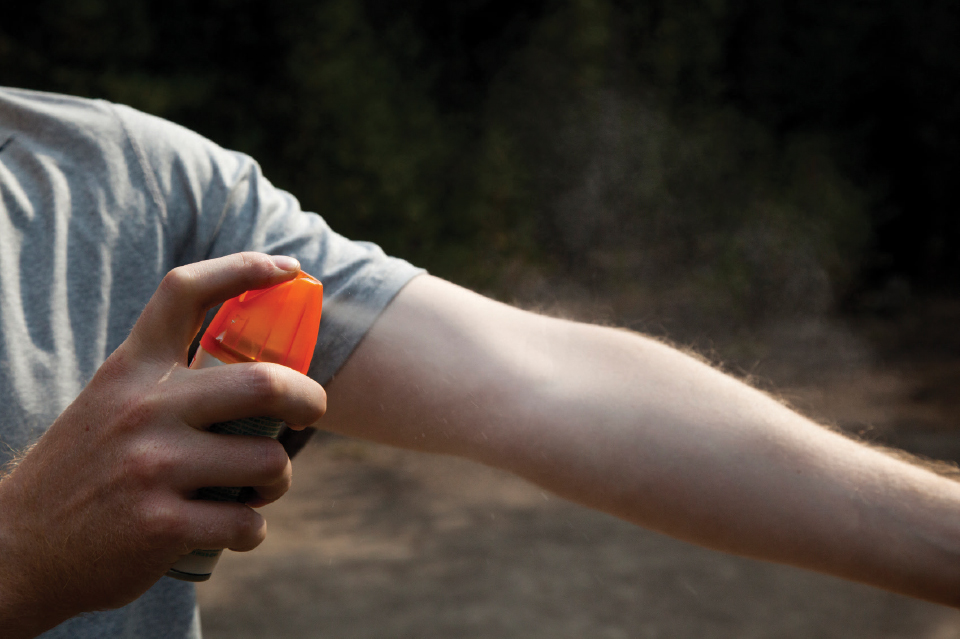Don’t Let Those Bugs Get Under Your Skin

Hiking and being active in the woods or in tall grass can expose you to ticks. While ticks are much more prevalent in the Northeast, where wooded areas are wet and moist, they are also found in Texas. It’s important to be aware of ticks and take the proper steps to prevent bites and avoid illness or infections such as Lyme disease and some encephalitis-causing viruses. The Center for Disease Control classifies Texas as a “low to no-risk area” for Lyme disease, as cases have not surpassed more than 100 per year since 2002; however, the cooler northwestern areas of the U.S. have a much higher risk. So whether you’re vacationing in high-risk areas or being active outside in Texas, a bit of tick knowledge can go a long way in maintaining health in people and pets.
Tick 101
Ticks crawl up. They don't jump, fly, or drop from trees—that’s a common misconception. Ticks usually adhere through contact, such as from brushing against high grass; after contact, they latch onto the foot or leg and then crawl up the body to find a spot to feed.
All ticks come in small, medium, and large sizes. Depending on their stage of life, they have a different number of legs; larvae have six legs (three sets) while nymphs and adults have eight (four sets).
Ticks can be active even in the winter if the temperature is above 40 degrees Fahrenheit, but they especially like the spring and summer heat.As more people and more deer are pushed together into urban areas in the eastern and western U.S., there has been an abundant geographic spread of deer ticks. Only deer ticks and their “cousins” transmit Lyme disease bacteria.
Most tick-borne diseases require at least a 24-hour attachment. Finding and removing ticks quickly can help prevent infection. Even a quick daily tick check at bath or shower time can be helpful in finding and removing attached ticks before they become harmful to health.
Deer tick nymphs look like a poppy seed. They're easy to miss, as bites are generally painless, and they are often found biting hard-to-see places on the body. It’s important to know what these young ticks look like, because about one in four nymphal deer ticks carry Lyme disease and other nasty germs in the northeastern, mid-Atlantic, and upper mid-western U.S.
The lone star tick (Amblyomma americanum), called “speck-back” in the Ozark Mountains, can carry spotted fever, tularemia, and possibly Q fever. In the Southern states east of Texas, this species bites in all stages of its life. The bite is painful and may itch for a long time. Common hosts are livestock, dogs, deer, birds, and people.
The easiest and safest way to remove a tick is with very pointy tweezers. Grab the tick with the tweezers and gently pull the tick out like a splinter. Be careful not to squeeze or break engorged ticks. Coming into contact with the fluid in their bodies can cause disease.
Tips to Prevent Tick Bites
Keep lawns mowed and underbrush cleared in yards. Dog ticks are found in grassy areas, and adult dog ticks bite people and animals.
Wear light-colored clothing so ticks can be spotted before they attach.
Treat pets for ticks. Like people, dogs and cats can get diseases from ticks—some of which can be fatal. There are prevention collars and medications (such as Frontline, Advantix, and Certifect) that contain amitraz, an effective chemical in killing ticks.
Perform a quick body scan after walking through high grass, underbrush, or woods.
Wear tick-repellent clothing. Yes, this exists. The clothing is sold under the brand name Insect Shield and is made with a chemical called permethrin (it’s the ingredient found in pet shampoo and lice treatment for children). It also repels mosquitos, flies, ants, and no-see-ums.
ID that Tick!
If you find a tick attached to your body, the Department of State Health Services would like to identify and test it for you—for free. Place it in a small container with 70 percent ethyl or isopropyl alcohol and seal tightly. Print out the tick submission form found online at ticktexas.org and fill it out. Place the completed form and container with the tick in a mailing tube or padded envelope (note: never put loose ticks in an envelope) and send to
Department of State Health Services
ATTN: Zoonosis Control – MC 1956
P.O. Box 149347
Austin, TX 78714-9347






